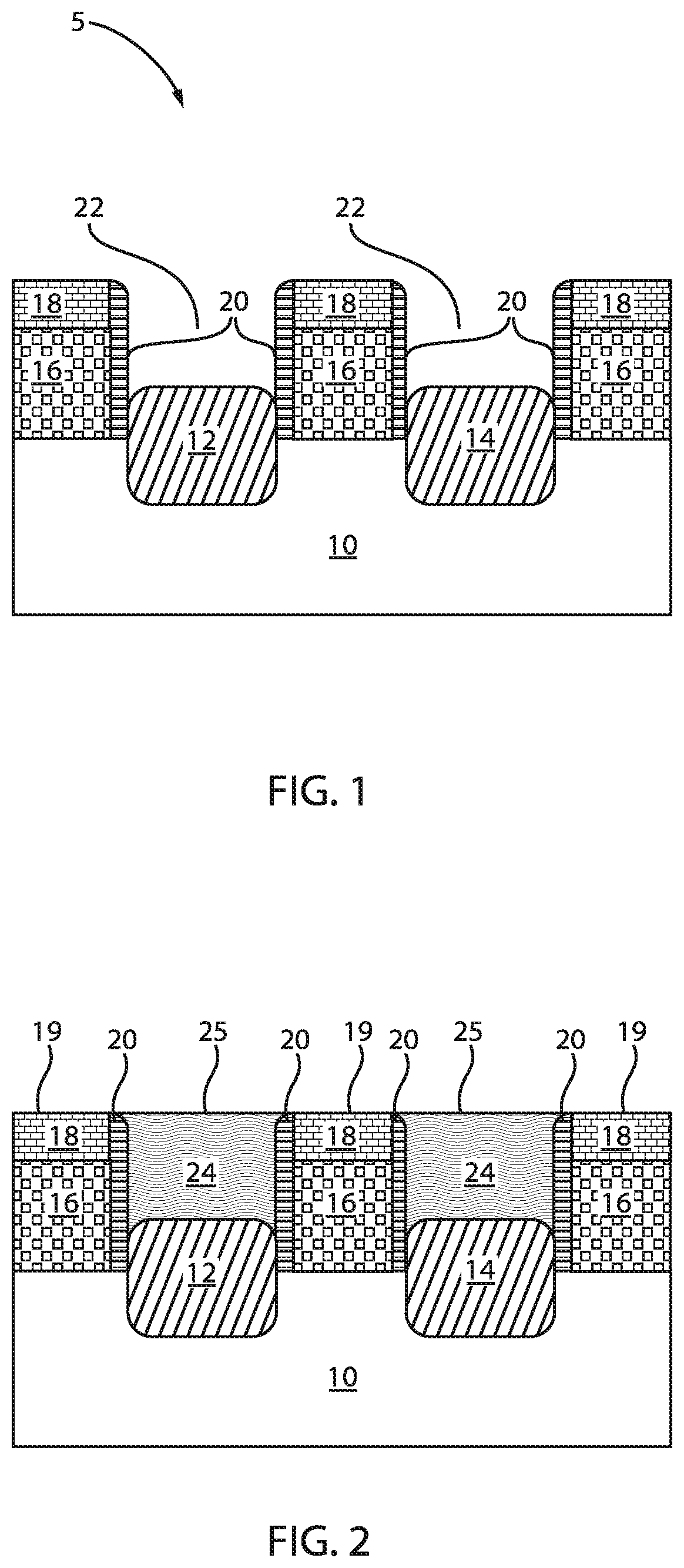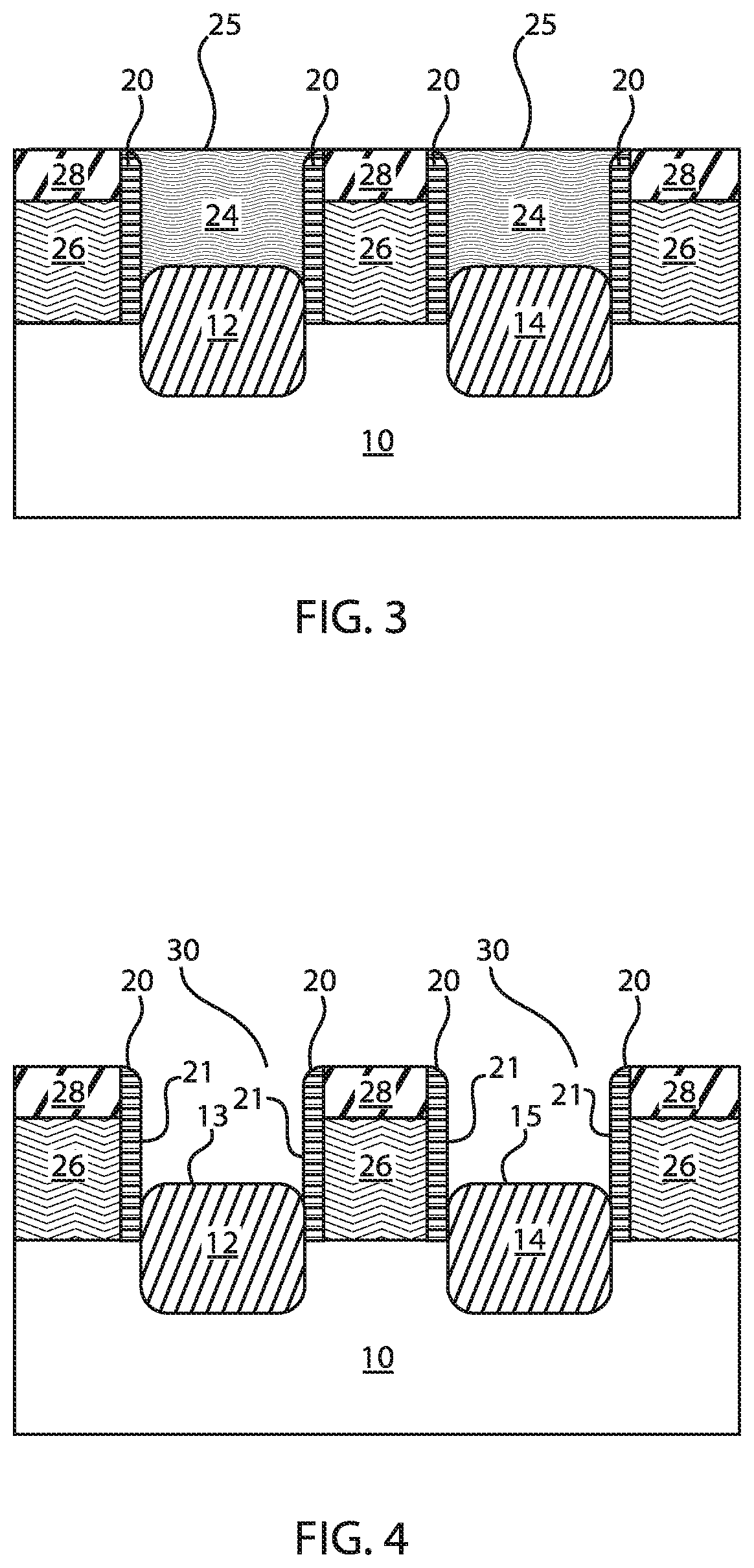Formation of air gap spacers for reducing parasitic capacitance
a technology of air gap spacer and capacitance reduction, which is applied in the direction of semiconductor devices, semiconductor/solid-state device details, electrical apparatus, etc., can solve the problems of resistor-capacitor delay time and device operating speed decrease, and achieve the effect of reducing parasitic capacitan
- Summary
- Abstract
- Description
- Claims
- Application Information
AI Technical Summary
Benefits of technology
Problems solved by technology
Method used
Image
Examples
Embodiment Construction
[0028]Embodiments in accordance with the present invention provide methods and devices for reducing parasitic capacitance between, e.g., gate structures and source / drain regions. In electrical circuits, parasitic capacitance is unwanted capacitance that exists between parts of an electronic component or circuit simply because of their proximity to each other. When two electrical conductors at different voltages are close together, the electric field between them causes electric charge to be stored thereon, which is referred to as parasitic capacitance. Therefore, reducing front end of line (FEOL) parasitic capacitance remains a focus for advanced technology node development. The exemplary embodiments provide for air-gaps that can be created and incorporated into semiconductor manufacturing technology to reduce parasitic capacitance.
[0029]Embodiments in accordance with the present invention provide methods and devices for forming air-gap spacers. The air-gap spacers can be formed by ...
PUM
 Login to View More
Login to View More Abstract
Description
Claims
Application Information
 Login to View More
Login to View More - R&D
- Intellectual Property
- Life Sciences
- Materials
- Tech Scout
- Unparalleled Data Quality
- Higher Quality Content
- 60% Fewer Hallucinations
Browse by: Latest US Patents, China's latest patents, Technical Efficacy Thesaurus, Application Domain, Technology Topic, Popular Technical Reports.
© 2025 PatSnap. All rights reserved.Legal|Privacy policy|Modern Slavery Act Transparency Statement|Sitemap|About US| Contact US: help@patsnap.com



